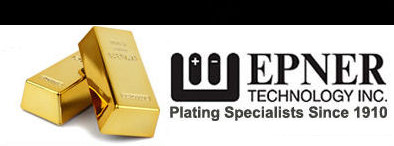Rhodium Plating Baths
- Sulfate
- Phosphate
- Mixed
Rhodium has also been used extensively in electronic applications requiring wear resistance and stability at high temperatures. High costs have gradually diminished the use of rhodium for heavy deposits, and in view of recent major improvements in the plating technology and visual appearance of lower-cost palladium and ruthenium, it seems likely that rhodium will be at least partially replaced even for flash applications over the next decade or so.
Rhodium is plated from strongly acid solutions containing rhodium sulfate or rhodium phosphate. The salts are ordinarily sold as proprietary concentrates which should be added to the premixed acid before use. If the acid concentrates are added to water alone, there is a risk of precipitation of basic rhodium salts due to hydrolysis. This tendency is most pronounced in the phosphate system.
Dilute baths containing 1.5-2 g/L Rh metal are used for decorative and thin deposits. They operate at low current efficiencies, generating considerable hydrogen gas with resulting increase in pH in the cathode boundary layer. This tends to cause hydrolysis of the rhodium salts, leading to inclusions and high stresses in the deposits. For this reason, it is important to maintain an adequate acid concentration in the plating baths.
For heavy deposits, the concentrations of both rhodium and acid in the bath are increased, and the bath is operated at somewhat higher temperature. All of these factors tend to reduce stress in the deposits. Proprietary systems, usually containing additives for stress control, are available. It is possible using these to achieve and maintain a compressive stress in the deposits.
The sulfate bath is used almost exclusively for heavy rhodium deposits, largely because hydrolysis of the rhodium salt is least troublesome in the sulfate system. Accordingly, deposit stresses tend to be lowest in this system. Heavy rhodium deposits are almost always applied over an underplate of gold, silver or nickel in order to avoid immersion deposition and solution contamination. Rhodium solutions can ordinarily be applied directly to nickel underplates without using a strike. A strike coating, usually nickel, is required for most other base metals.
